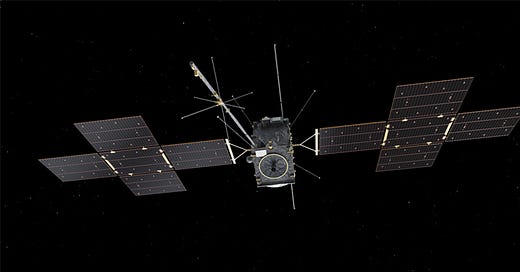Issue 52 Subscribers 1,825.
With the launch of ESA’s JUICE mission just days away, I thought I’d take a closer look at the mission and what makes it so special. I am trying to spend a little time with my family this long weekend, so there won’t be any news section in today’s issue.
To my 28 new subscribers, enjoy your first issue and, as always, if you have any comments, suggestions, or tips, you can reply to this email.
Keep reading with a 7-day free trial
Subscribe to Europe in Space to keep reading this post and get 7 days of free access to the full post archives.





